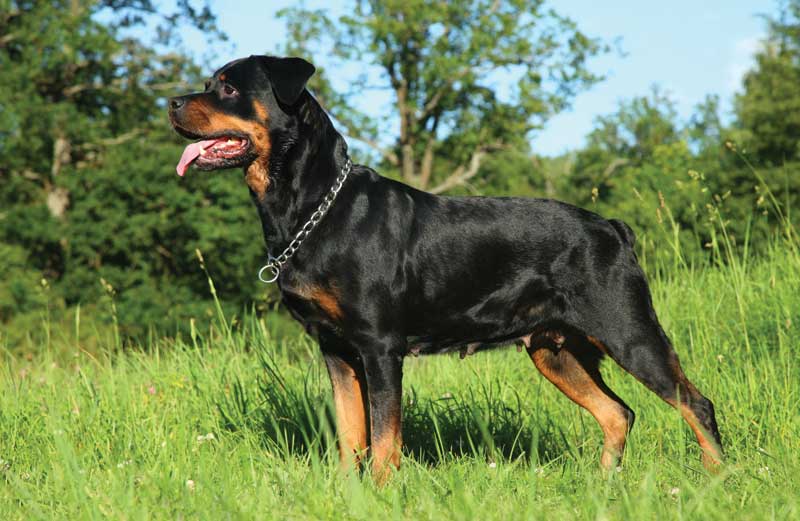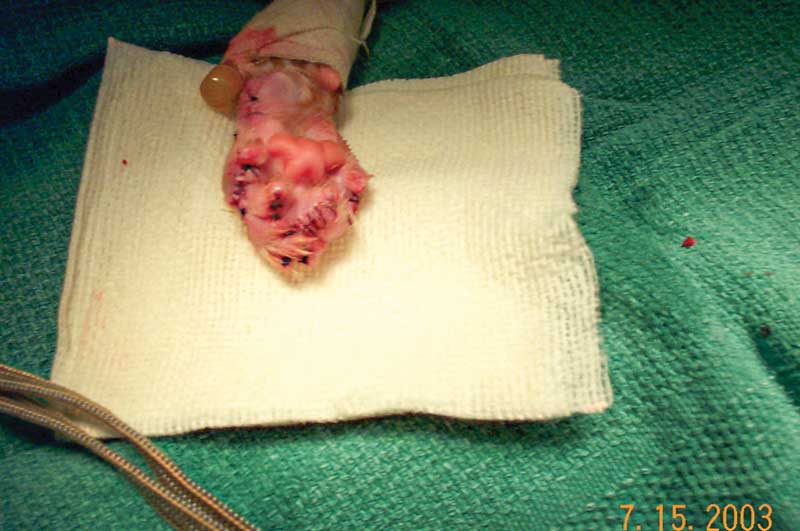
Why is it that we, as a profession, are still doing non-essential surgeries?
Surgeries that are outlawed in almost every developed country in the world. We all know what I am talking about—on the top of the list is onychectomies and ear crops, but also tail docking and dewclaw removal.
Before I move on, I want to remind everyone of the oath we took at the time we became veterinarians:
“Being admitted to the profession of veterinary medicine, I solemnly swear to use my scientific knowledge and skills for the benefit of society through the protection of animal health and welfare, the prevention and relief of animal suffering, the conservation of animal resources, the promotion of public health, and the advancement of medical knowledge.
I will practice my profession conscientiously, with dignity, and in keeping with the principles of veterinary medical ethics.
I accept as a lifelong obligation the continual improvement of my professional knowledge and competence.”
I felt obligated to write this article after some compassionate people, including congressional members of my state, introduced a bill to outlaw declaws/onychectomies. The reaction from my state veterinary medical association (VMA) was swift and unequivocal: It would not support the bill and would do what they could to fight it. Ironically, the cover picture for that VMA article was of a cat biting an arm, not scratching it. A bite is much more likely to occur from a cat that has been declawed.
I want to lay out the evidence that shows why we should not be doing declaws or other cosmetic procedures on these animals and rely on the intelligence and morality of the veterinary community to make the right decision in favor of their patients.
Declawing
To begin, I would like to discuss declaws. In full disclosure, I used to do declaws, or onychectomies, myself. I was taught how to do them in veterinary school, and performing onychectomies was fully expected of me by both my employers and pet caregivers. However, as I became aware of the painful consequences of declawing, as well as the behavioral problems exhibited by declawed cats, I took to heart my obligation to prevent and relieve animal suffering and stopped offering the procedure. Instead, I spend time with caregivers to educate them on alternatives to declaws to mitigate some of the damage claws can cause. I give these clients a button that says, “I love my cat more than my couch.”
I have had veterinarians tell me they know how to manage the pain of declaws and they do not see long-term complications in their patients. I would like to pose they are not looking at their patients critically enough. There is no known analgesic protocol that adequately provides pain relief during the time from the start of the declaw procedure through full recovery. One study showed that surgical methods cause pain.1 Another study looked at 12 different analgesic protocols and found them all inadequate.2 Tendonectomies are not the answer, as they can have more complications than declaws. Then there are the behavioral issues, including biting and/or inappropriate elimination, that develop secondary to tendonectomies or declaws.3,4
Once a cat has been declawed, there is a very good chance it will develop neuropathic pain in the weeks following the surgery,5 which is difficult to diagnose. Neuropathic pain in people is a self-reporting pain syndrome and is underdiagnosed and managed in veterinary medicine.6 In my own practice, I commonly treat declawed cats for persistent post-operative pain. This pain can exist for years beyond the declaw event. Unfortunately, treatment is complex, costly, and has a high failure rate, with only 10 to 20 percent of cats receiving relief from my many phantom pain/neuropathic pain protocols.
Finally, what about immune-compromised caregivers? Given declawed cats are more likely to bite,7 this argument is specious, as a bite is much more serious than a scratch, immune-compromised or not.

Ear crops
There is no known medical reason for performing an ear crop.8 This is purely a cosmetic procedure that, like declawing, is outlawed in many countries in the world. What’s more, it has the potential for many negative health outcomes in dogs.9 This same reference also points out the claim ear cropping can help with chronic ear infections has not been substantiated.
The blame for the continuation of ear cropping is three-fold: Veterinarians who continue to do the procedure with no regard to the subsequent consequences, breeders who want the classic look of their breed, and, most importantly, the American Kennel Club (AKC), which still allows dogs with cropped ears to be shown. Also, like declawing, improper pain control can lead to life-long issues. Horrifyingly, there are reports of breeders doing ear crops on their own puppies, without the benefit of analgesia or proper surgical protocols.
Tail docks
Tail docking is done by both veterinarians and breeders. When done by the latter, it is either by placing an elastic band around the tail, which then falls off due to ischemic necrosis, or the tail is removed surgically without the benefit of a local anesthetic. Likewise, in the veterinary setting, it is often done without the benefit of any analgesia.10
Tail docking is done for cosmetic reasons. There are certain cart-pulling breeds, such as the Rottweiler, that classically had it done to keep the tail from getting caught up and injured in the harness. Other reasons have been to prevent accumulation of fecal material and to prevent injury to the tail. However, Rottweilers rarely pull carts today, and harnesses can be modified to protect the tail, should the need arise. Plus, not all bushy-tailed dogs get their tails docked, yet suffer no issues in hygiene (e.g. the golden retriever).
The incidence of tail injury is very low, at less than 0.29 percent of dogs. It was estimated 500 dogs would need to have their tails docked, just to prevent one tail injury,11 and not all those tail injuries are serious. Additionally, tail docking causes severe acute pain and behavioral distress in puppies.12 As so many puppies have their tails docked by breeders, specific legislation would probably be needed to outlaw this unnecessary cosmetic procedure.
Dewclaw removal
Dewclaw removal is another controversial procedure. Again, specious arguments by both breeders and veterinarians claim this procedure is necessary to prevent the traumatic removal of a dewclaw. In my 43-plus years in private practice, I have seen torn dewclaws, but at a lower rate than any of the other nails (especially now that wooden decks have become popular, with the nail-catching gaps between the boards), yet no one is suggesting we remove all nails for this “just-in-case” scenario.
There is a medical reason not to remove the dewclaw. Some people think it is some kind of leftover digit that evolution is trying to get rid of, but, with the advent of slow-motion videography, it shows performance dogs using the dewclaw for gripping as they turn tight corners. Other studies that have looked at the evaluation of structure to function have shown this is a moveable and functional digit.13
Additionally, removal of the dewclaw can and usually does cause arthritis of the entire carpal joint due to destabilization of that joint; the dewclaw is attached to several tendons and ligaments that help stabilize the carpus and prevent unnecessary torque when running, turning, and jumping. During my orthopedic exams, I flex the carpus to see if the carpal pad can touch the underside of the antebrachium as it normally should. When it does not, I look for the presence of the dewclaw, and it is missing in most of these cases.
Conclusion
This article will not convince everyone to change their participation in these cosmetic procedures, despite the evidence this writing is based on; but I strongly feel it is incumbent on us, as our patient’s advocates, to educate clients and breeders as to why these procedures are not only unnecessary, but carry with them adverse events that can have life-long effects on the patient’s health and well-being.
Michael Petty, DVM, is a graduate of the veterinary school at Michigan State University. As the owner of Arbor Pointe Veterinary Hospital and the Animal Pain Center in Canton, Mich., Dr. Petty has devoted his professional life to the care and well-being of animals, especially in the area of pain management. Petty is the past president of the International Veterinary Academy of Pain Management. A frequent speaker and consultant, he has published articles in veterinary journals and serves in an advisory capacity to several pharmaceutical companies on topics of pain management. Petty has been the investigator/veterinarian in 12 FDA pilot and pivotal studies for pain management products. He has lectured both nationally and internationally on pain management topics.
References
- Clark K, Bailey T, Rist P, Matthews A. Comparison of 3 methods of onychectomy. Can Vet J. 2014;55:255–262
- Wilson DV, Pascoe PJ. Pain and analgesia following onychectomy in cats: a systematic review. Vet Anaesth Analg. 2016;43(1):5–17.
- Cooper MA, Laverty PH, Soiderer EE. Bilateral flexor tendon contracture following onychectomy in 2 cats. Can Vet J. 2005;46(3):244–246.
- Cloutier S, Newberry RC, Animal ACA, et al. Behavioural signs of postoperative pain in cats following onychectomy or tenectomy surgery.
- Hanley MA, Jensen MP, Smith DG, et al. Preamputation pain and acute pain predict chronic pain after lower extremity amputation. J Pain 2007; 8: 102–109.
- Epstein, M Vet Clin North Am Small Anim Pract 2020 Jul50(4):789-809
- Nicole K Martell-Moran, Mauricio Solano, Hugh GG Townsend. Pain and adverse behavior in declawed cats. Journal of Feline Medicine and Surgery, 2017
- Packová, A., Takáčová, D. Dogs Health Related to Ear Cropping. folia veterinaria, 64, 1: 77—82, 2020
- https://www.avma.org/resources-tools/literature-reviews/welfare-implications-ear-cropping-dogs
- Bennett PC, Perini E. Tail docking in dogs: a review of the issues. Aust Vet J. 2003;81(4):208–18.
- Diesel G, Pfeiffer D, Crispin S, Brodbelt D. Risk factors for tail injuries in Great Britain. Vet Rec. 2010;166:812–7.
- Bennett PC, Perini E. Tail docking in dogs: a review of the issues. Aust Vet J. 2003;81(4):208–18.
- Zink C, Schlehr M Working Dog Structure: Evaluation and Relationship to Function Front Vet Sci 2020; 7: 559055
